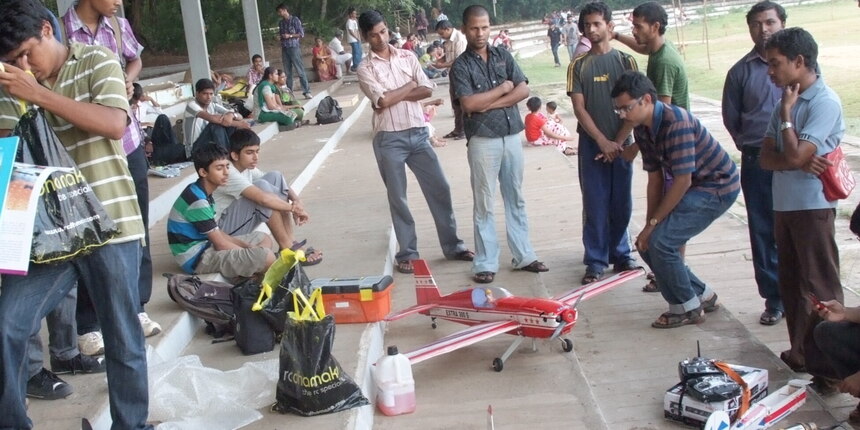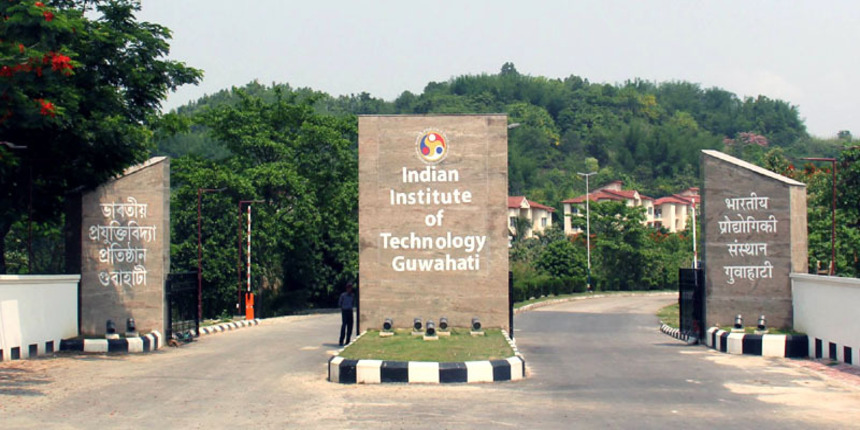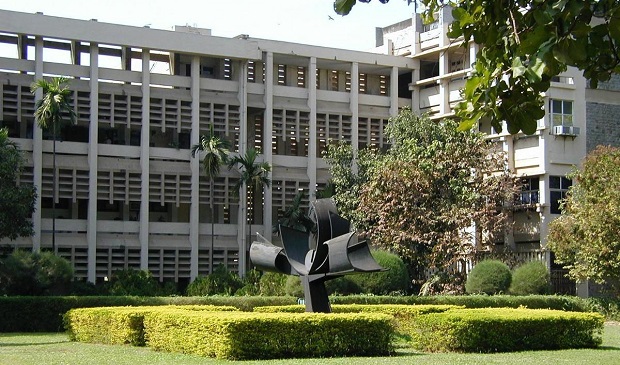10 Years Of JEE Advanced: Toppers’ scores drop; maths harder; chemistry easier; IIT seats up 68%
Sheena Sachdeva | May 29, 2023 | 10:57 AM IST | 7 mins read
JEE Advanced 2023 result is on June 18. Here’s JEE Advanced question paper analysis, toppers’ scores, cut-offs, subject-wise difficulty over 10 years.
JEE Advanced Chapter-Wise Weightage
Explore JEE Advanced chapter-wise weightage to identify high-scoring topics in Physics, Chemistry & Maths. Plan smarter and boost your exam preparation.
Download EBook
NEW DELHI: The mathematics section of the Joint Entrance Examination (JEE) Advanced has been getting tougher over the past decade but the 2022 edition was its toughest in a decade – the average percentage of candidates with correct responses was 9.43% for Paper 1 and 10.39% for Paper 2. The cut-off scores for reserved categories rose implying that candidates from the historically-marginalised Scheduled Castes, Scheduled Tribes and Other Backward Classes did better.
Latest: Free All-India JEE Main 2026 Mock Test - Attempt Now
JEE Advanced Prep: Syllabus | Preparation Tips | Chapter-Wise Weightage | AAT-Syllabus
JEE Advanced QP's & SP's: QP's 2025 | SP's 2026 | Paper 1 and 2 Analysis 2025
The JEE Advanced was conducted by Indian Institute of Technology (IIT) Bombay in August. The exam – also referred to as IIT JEE or IIT Entrance Exam – is for admission in undergraduate engineering programmes, mainly at the 23 Indian Institutes of Technology (IIT). Only candidates whose scores are in the top 2.5 lakh of the national-level Joint Entrance Examination (JEE) Main – conducted by the National Testing Agency (NTA) – are eligible to appear for the JEE Advanced. In 2022, over 1.55 lakh candidates wrote the exam.
Careers360 analysed JEE Advanced data from 2013 and found that the JEE Advanced toppers’ scores have dropped; more candidates from marginalised groups and women are qualifying; and the chemistry section of one JEE Advanced paper last year had a higher average percentage of candidates with correct answers than any other section of any JEE Advanced previous year question paper in a decade.
Over the same period, the number of BTech seats in the IITs rose 68.12%. Women’s participation improved due, at least in part, to the addition of supernumerary seats up to 20% of the total strength in 2018. In 2022, the Joint Admission Board (JAB) of the IITs introduced supernumerary seats for foreign nationals including People of Indian Origin (PIO) and Overseas Citizens of India (OCI).
The JEE Advanced 2023 date is June 4, 2023 and registration was from April 30 at jeeadv.ac.in. The JEE Advanced result 2023 will be declared on June 18, 2023 at the official website, jeeadv.ac.in.
Also Read | JEE Advanced 2023: Admit card out
IIT JEE Result: JoSAA counselling, JAB reports
Counselling for IIT admission – the process of assigning a specific seat to a student – is conducted by the Joint Seat Allocation Authority (JoSAA) after the JEE Advanced result is declared and in 2022, it conducted six rounds of counselling at the end of which 16,635 seats were allotted to candidates. This was 37 more than the total capacity across IITs. Nine supernumerary seats were created for candidates from defence services and 66 for foreign nationals at the final round.
The JAB reports on the IIT JEE have changed over the years with some details and categories of data dropped from some reports and others – such as the distribution of qualified candidates by their school boards – left out for years after the NTA took over JEE Main.
IIT Admission: Seat increase
The number of IIT seats has grown over 68.12% between 2013-2022. In 2013, a total of 9,867 seats were allotted through JoSAA counselling; in 2022, that number was 16,598. Over that decade, six new IITs opened including IIT Palakkad, Tirupati, Bhilai, Dharwad, Jammu and Goa. Also, the existing Indian School of Mines became IIT-ISM Dhanbad in 2016. Earlier, in 2012, Banaras Hindu University’s engineering college had become IIT-BHU.
JoSAA Counselling: IIT Seats growth (2013-2022)
Year | Seats |
2022 | 16,598 |
2021 | 16,232 |
2020 | 16,053 |
2019 | 12,461 |
2018 | 11,279 |
2017 | 10,988 |
2016 | 10,572 |
2015 | 10,006 |
2014 | 9,784 |
2013 | 9,867 |
Till 2015, candidates holding OCI or PIO passports were allotted supernumerary seats along with other foreign nationals. However, with changes in norms in 2016, JAB allotted open seats to this group of candidates.
In March 2021, the regulation changed again and this time, this group was to be treated as foreign nationals for seat allocation in IITs; 66 supernumerary seats for foreign nationals were created in 2022 where a maximum of 10% of sanctioned seats was allowed. The number of seats for foreign nationals has grown from only seven in 2011 to 66 in 2022.
Also Read | JEE Advanced 2023: These IIT BTech courses had the highest cut-offs last year
 JEE Advanced 2023 is being conducted by IIT Guwahati. Each year, a different institute organises the IIT JEE. (Source: IIT Guwahati)
JEE Advanced 2023 is being conducted by IIT Guwahati. Each year, a different institute organises the IIT JEE. (Source: IIT Guwahati)
JEE Advanced: Qualifying candidates
In the JEE Advanced exam pattern, Papers 1 and 2 are both compulsory. Last year, 2,62,175 candidates were eligible for JEE Advanced of whom 1,60,038 registered. Of them, 1,55,538 candidates wrote both papers and 40,712 candidates – or, 26.17% – qualified.
This was lower than the previous year’s record.
JEE Main became a preliminary round for JEE Advanced from 2013. Before that year, the IIT JEE was a separate exam with no connection with the JEE Main – then known as the All India Engineering Entrance Examination (AIEEE). With the introduction of the two-exam system, the number of candidates writing the exam reduced.
JEE Advanced Result: Qualified candidates (2013-22)
Year | Appeared | Qualified (%) |
2022 | 1,55,538 | 26.17 |
2021 | 1,41,699 | 30 |
2020 | 1,50,838 | 28.64 |
2019 | 1,61,319 | 23.99 |
2018 | 1,55,158 | 21 |
2017 | 1,59,540 | 31.99 |
2016 | 1,47,678 | 24.75 |
2015 | 1,17,238 | 22.47 |
2014 | 1,19,580 | 22.7 |
2013 | 1,15,971 | 17.96 |
The qualifying criteria set out in the JEE Advanced information brochure last year had been “lowered down” later to include candidates “at least two times” the number of available seats in each category, says the JAB report. Students who cleared their Class 12 examination in 2020 and 2021 were also eligible for JEE Advanced 2022.
Once JEE Advanced was introduced, the highest number of candidates to qualify was in 2017. The reports don’t explain why so many qualified that year.
Also Read | AICTE Approval Process Handbook 2023: Five major changes for engineering colleges
JEE Advanced and CBSE
The JAB reports on JEE Advanced have changed over the years. The distribution of qualifying candidates by the school board under which they completed their school education was last available in the 2018 report. Since then, the JAB has stopped sharing board data.
The data till 2018 shows that the maximum number of students to qualify were from schools affiliated to the Central Board of Secondary Education (CBSE). Andhra Pradesh, Telangana and Maharashtra boards competed with each other for distant second and third positions over 2010-2018.
In 2018, the last year for which data is available, 55.71 % of qualified candidates were from CBSE, the highest amongst all. Telangana State Board of Intermediate Education (TSBIE) with 8.92% qualified students and Board of Secondary Education Andhra Pradesh (BSEAP) with 7.42% were a very distant second and third. The vast majority of CBSE schools are private.
Also Read | IIEST Shibpur: Once mentor to IIT Kharagpur, this West Bengal engineering college is struggling
JEE Advanced paper analysis
In comparison to the previous year, the average percentage of candidates with correct responses in the maths section of Paper 1 was just 9.43% – calculated out of the total number of candidates who wrote both papers, or 1,55,538. For Paper 2, it was 10.39%.
A few questions were dropped – one in Paper 1 and two from the physics section of JEE Advanced Paper 2.
In 2022, the average percentage of candidates with correct responses in the physics section of Paper 1 was significantly lower than in most years of the decade, but still higher than 2019 when it was only 13.27%.
The chemistry section of Paper 1 in 2022, seems to have been the easiest with an average percentage of candidates with correct answers over 65% – the highest in a decade. Once again, data was not available for 2015.
JEE Advanced: Average % of candidates with correct responses
Year | Physics 1 | Physics 2 | Maths 1 | Maths 2 | Chemistry 1 | Chemistry 2 |
2022 | 14.25 | 14.04 | 9.43 | 10.39 | 66.80 | 14.11 |
2021 | 20.6 | 13.06 | 14.67 | 11.24 | 11.96 | 13.38 |
2020 | 16.25 | 7.85 | 7.74 | 10.1 | 17.6 | 12.08 |
2019 | 13.27 | 16.48 | 10.5 | 10.83 | 24.1 | 23.29 |
2018 | 23.95 | 24.45 | 17.52 | 18.1 | 12.16 | 15.65 |
2017 | 26 | 25 | 35 | 37 | 26.8 | 28.14 |
2016 | 18.85 | 16.42 | 13.19 | 22.62 | 20.64 | 22.8 |
2014 | 24.42 | 29.66 | 26 | 26.28 | 22.73 | 38.2 |
2013 | 32.82 | 32.12 | 27.47 | 26.77 | 28.27 | 31.62 |
In 2022, the cut-offs, or minimum percentage of marks required to qualify, was lowest amongst all the previous years.
JEE Advanced cut-off trends
Year | No. qualified | CRL | SC | ST | OBC |
2022 | 40,712 | 15.38 | 7.78 | 7.78 | 13.89 |
2021 | 41,862 | 17.5 | 8.7 | 8.7 | 15.7 |
2020 | 43,204 | 17.5 | 8.7 | 8.75 | 15.75 |
2019 | 38,705 | 25.0 | 12.5 | 12.5 | 22.5 |
2018 | 31,988 | 35.0 | 17.5 | 17.5 | 31.5 |
2017 | 51,040 | 35.0 | 17.5 | 17.5 | 31.5 |
2016 | 36,566 | 35.0 | 17.5 | 17.5 | 31.5 |
Also Read | Reform NAAC to include IITs, assess by institution type, follow 3-year cycle: Education ministry panel
 JEE Advanced: IIT Bombay conducted the IIT JEE last year. (Image: Official website)
JEE Advanced: IIT Bombay conducted the IIT JEE last year. (Image: Official website)
JEE Advanced toppers
In 2022, the top-ranker’s score was the lowest since 2013. The candidate at all-India rank (AIR) 1 in the JEE Advanced result merit list scored 314 out of 360, or 87.2%. Before this, the lowest was the 320 scored by AIR 1 in 2016. However, the total marks have also varied over the years.
JEE Advanced topper scores
Year | AIR1 score | Total marks | % Score |
2022 | 314 | 360 | 87.22 |
2021 | 348 | 360 | 96 |
2020 | 352 | 396 | 88.88 |
2019 | 346 | 372 | 93 |
2018 | 337 | 360 | 93 |
2017 | 339 | 366 | 92 |
2016 | 320 | 372 | 86 |
2015 | 469 | 504 | 93.05 |
2014 | 334 | 360 | 92.77 |
2013 | 332 | 360 | 92.22 |
Similarly, for JEE Advanced toppers, maximum marks in all the three subjects were lower last year than in 2021.
JEE Advanced toppers scores by subject
Year | Total | Chemistry | % in | Maths | % in | Physics | % in |
2022 | 120 | 109 | 90 | 109 | 90 | 96 | 80 |
2021 | 120 | 112 | 93 | 116 | 96 | 120 | 100 |
2020 | 132 | 118 | 89 | 124 | 93 | 110 | 83.33 |
2019 | 124 | 112 | 90 | 121 | 97 | 113 | 91.12 |
2018 | 120 | 114 | 95 | 106 | 88.33 | 117 | 97.5 |
2017 | 122 | 115 | 94 | 120 | 98.36 | 104 | 85.24 |
2016 | 124 | 105 | 84 | 102 | 82.25 | 113 | 91.12 |
2015 | 168 | 142 | 84 | 162 | 96.42 | 165 | 98.21 |
2014 | 120 | 108 | 90 | 117 | 97.5 | 109 | 90.83 |
2013 | 120 | 118 | 98 | 113 | 94.16 | 120 | 100 |
JEE Advanced: Women qualifying
Over the years, the number of women appearing for the JEE Advanced has increased. In 2017, as many as 7,259 women candidates qualified the JEE Advanced examination – the highest of all years.
Women qualifying JEE Advanced
Year | Appeared | Qualified | Qualified % |
2022 | 33,608 | 6,516 | 19.38 |
2021 | 32,285 | 6,452 | 19.98 |
2020 | 32,851 | 6,707 | 20.41 |
2019 | 33,249 | 5,356 | 16.10 |
2018 | 31,021 | 4,179 | 13.47 |
2017 | 29,872 | 7,259 | 24.3 |
2016 | 27,778 | 4,570 | 16.45 |
2014 | 21,447 | 3,009 | 14.02 |
2013 | 23,089 | 2,366 | 10.24 |
Data for the 2015 exam was not available.
Also Read | 21 central institutions don’t have ST/SC student cells: Education ministry
SC, ST, OBC candidates
More candidates from the historically-marginalised Scheduled Castes, Scheduled Tribes and Other Backward Classes (SC, ST, OBC) qualified JEE Advanced examination in 2022. Over 22% of OBC candidates qualified the JEE Advanced examination in 2022; in absolute numbers, 4,100 more OBC candidates qualified in 2022 than in 2021.
Similarly, 19% Dalit candidates qualified the exam in 2022; this was 258 more SC students than in 2021.
JEE Advanced: SC students
Year | Qualified | Qualified % |
2022 | 7,984 | 19.61 |
2021 | 7,726 | 15 |
2020 | 7,852 | 18.17 |
2019 | 8,742 | 23 |
2018 | 5,471 | 17 |
2017 | 4,840 | 9 |
2016 | 7,324 | 20 |
2015 | 2,571 | 10 |
2014 | 4,475 | 16 |
2013 | 2,990 | 14 |
The number of tribal candidates qualifying increased by 301 in one year. That said, their participation had dropped over the Covid pandemic years and is climbing back now.
Once again, 2017 data is anomalously large; according to the report, over 13,000 tribal students qualified the JEE Advanced that year.
JEE Advanced: ST students
Year | Qualified | Qualified % |
2022 | 3,058 | 7.5 |
2021 | 2,757 | 7 |
2020 | 2,811 | 6.5 |
2019 | 3,084 | 8 |
2018 | 1,786 | 6 |
2017 | 13,490 | 26 |
2016 | 2,386 | 7 |
2015 | 1,745 | 7 |
2014 | 1,271 | 5 |
2013 | 856 | 4 |
The number of OBC candidates qualifying grew by over 4,000 from 2021 to 2022.
JEE Advanced: OBC students
Year | Qualified | Qualified % |
2022 | 9,205 | 22.61 |
2021 | 5,105 | 12.19 |
2020 | 9,195 | 21.28 |
2019 | 7,526 | 19.44 |
2018 | 6,900 | 21.57 |
2017 | 9,437 | 18.50 |
2016 | 7,743 | 21.21 |
2014 | 6,356 | 23.40 |
2013 | 4,244 | 20.10 |
Once again, there was no data from 2015 for this group.
Follow us for the latest education news on colleges and universities, admission, courses, exams, research, education policies, study abroad and more..
To get in touch, write to us at news@careers360.com.